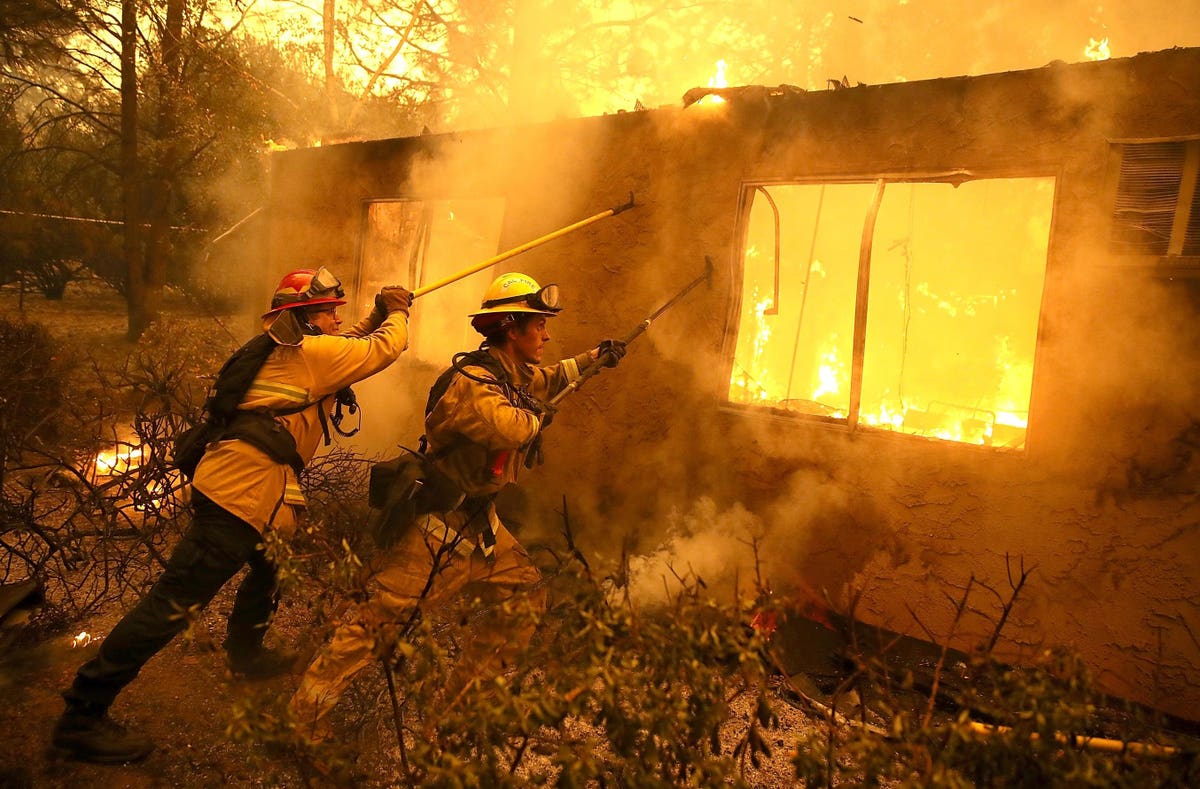A crisis management best practice is to find ways to improve and strengthen responses to a disaster or emergency by learning from other crisis situations. It’s essential, of course, to choose appropriate and relevant examples and carefully weigh their similarities—and differences.
The California Camp Fire in 2018 (also known as the Paradise fire) and the Lahaina wildfires on Maui last week are worth comparing for what they tell us about managing future crises.
Similarities
Clifford Oliver is a retired former assistant administrator of FEMA and is now the principal at Nanticoke Global Strategies. He said via email that the similarities include:
Location
They “were both in remote areas, bringing in additional firefighting resources took time…firefighters were forced to abandon their firefighting efforts once structures in more densely populated areas started to burn.”
Damage
“A high percentage of the buildings in each town were consumed by the fire.”
Fuel
“As the fires approached the towns and started to burn structures, those structures became fuel and ember sources that fed the spread and speed of the fire.”
Evacuation Issues
“Many died in their cars when they were trapped by the flames while trying to escape the approaching fire. In both cases, there were limited evacuation routes that became clogged with traffic.”
Topography
Andrea Davis, an emergency management expert, said via email that “From the initial onset of the fire, the speed of the winds and Maui’s topography made it challenging for first responders to not only respond quickly but to access impacted areas posing significant challenges to get the fire under control.”
Speed And Intensity
Like the Camp Fire, the speed and intensity of the wildfires on Maui, “didn’t allow for any notification to residents in the impacted area, leaving individuals with limited ability to evacuate safely,” Davis observed.
“With no emergency notifications, impacted individuals were unaware of the dangers and the speed of the fire until it was too late to respond in a safe way. Most individuals had to quickly evacuate any way they could, leaving behind all belongings,” she noted.
Differences
Oliver pointed out that there are major differences between the two headline-making fire disasters.
Land Shape
- The shape of the land in the two locations is very different. The Camp Fire was mostly located in a canyon, and Lahaina is on the side slope of an extinct volcano.
Destruction
- 18,000 structures were destroyed in the Camp Fire, while approximately 2-3,000 structures in Lahaina were destroyed.
Fatalities
- Though it is too earlier to know for sure, based on the number of structures destroyed in each fire, the per capita death rate in Lahaina appears to be considerably higher than in the Camp Fire.
Lessons Learned
A spokesperson for the U.S. Fire Administration said in a statement that there are lessons from the Camp Fire (and the Marshall Fire in Colorado) that are being applied as Maui recovers. They include:
- The importance of staying in constant communication with response personnel and the public.
- Planning for and preparing for the worst.
- Caring for first responders and workers on the ground.
- Bringing in the experts that are needed to address issues and challenges.
Karen Collins, vice president of property and environment at the American Property Casualty Insurance Association, shared these four lessons from the Camp Fire and Maui wildfires:
- Everyone living in western states need to learn how to live with wildfire by taking steps to mitigate their properties and be financially prepared.
- There are several factors that are contributing to a significant increase in the costs and timeframes needed to rebuild homes and businesses following wildfires.
- Following a conflagration-scale event, there needs to be good coordination among local, state and federal authorities, insurers and consumers regarding debris removal and payments.
- Rebuilding to a better code can meaningfully reduce wildfire risk in the future.
Recommendations
Formal Evacuation Planning
“Wildfire evacuation planning needs to be done in a more formal way with traffic studies, written plans, and community education and outreach, such as is done in hurricane and tsunami evacuation planning (both of which are in place on Maui),” former FEMA assistant administrator Oliver said.
Better Tools And Training Needed
“Local and State emergency management/first responders need better wildfire risk estimate tools and training so they can rapidly assess and predict fire conditions before and at the inception of a wildfire, so response resources, public alerting, and evacuations are ordered in a timely manner,” he noted.
‘True Leadership’
“Adopting improved fire-resistant building codes and land use practices will increase the costs of rebuilding and future land development. Adopting and enforcing these requirements will similarly require true leadership and a political commitment on the part of state and local officials,” Oliver concluded.
Community Hubs
“Creating community hubs is a tried-and-true way for emergency responders to expedite recovery,” Davis, the emergency management expert, said.
“They can do this by leveraging non-profits and other community organizations that have become impromptu community shelters and distribution sites. This would go a long way in getting resources and aid to those in need in a quicker fashion,” she commented.
‘Lean On the Private Sector’
“First responders should lean on the private sector to help them get the word out and engage them in the recovery,” Davis noted.
Lessons From The Maui Wildfires
The spokesperson for the U.S. Fire Administration noted that “It is too early to know all the lessons that will be learned from the Lahaina Maui fire.”
Stay tuned.
Read the full article here





